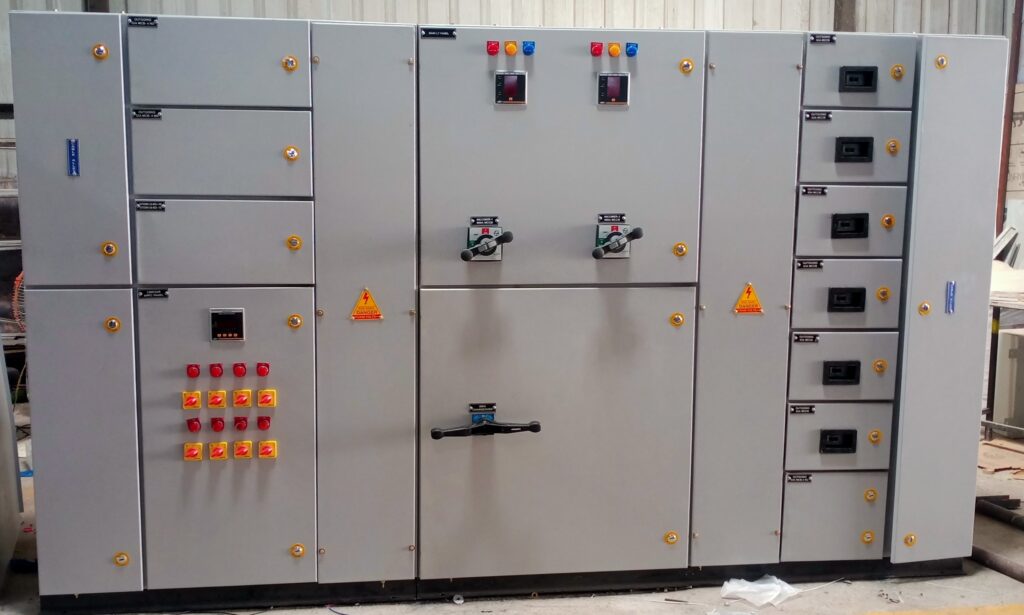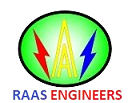The LT panel receives power from transformers and backup DG sets, distributing it to various outgoing feeders. It ensures efficient electricity distribution, safety, and productivity in industrial settings. The Low Tension (LT) panel, also known as the main electrical panel, plays a crucial role in electrical distribution systems. Let’s explore its key components and features:
- Measuring Meters:
- These meters monitor system parameters such as voltage, current, energy, and power factor.
- Digital Multifunction Meters are commonly used for precise measurements.
- Indicator and Selector Switches:
- c\Indicators:
- Display the status of panel operations.
- Different colours indicate various conditions:
- R Phase
- Y Phase
- B Phase
- ACB ON/OFF/Trip
- MCCB ON/OFF/Trip
- Selector Switches:
- Enable auto and manual control.
- c\Indicators:
- Protection Relays:
- Automatic switching devices that detect abnormalities in electrical circuits.
- Provide tripping signals to circuit breakers for safety.
- Types include:
- Differential Relay: Compares input and output current difference to protect against abnormalities.
- Over Voltage Relay: Guards against excessive voltage.
- Connection Diagram:
- LT panels receive power from two sources: transformers (outgoing 433V supply) and backup DG sets.
- Distributes power to various outgoing feeders (e.g., floor panels, WTP, chiller plants).
- Importance of LT Panels:
- Efficient Distribution: Ensures efficient electricity distribution.
- Safety: Critical components maintain safety (main circuit breakers, busbars, fuses, control relays).
Productivity: Proper functioning contributes to industrial productivity

